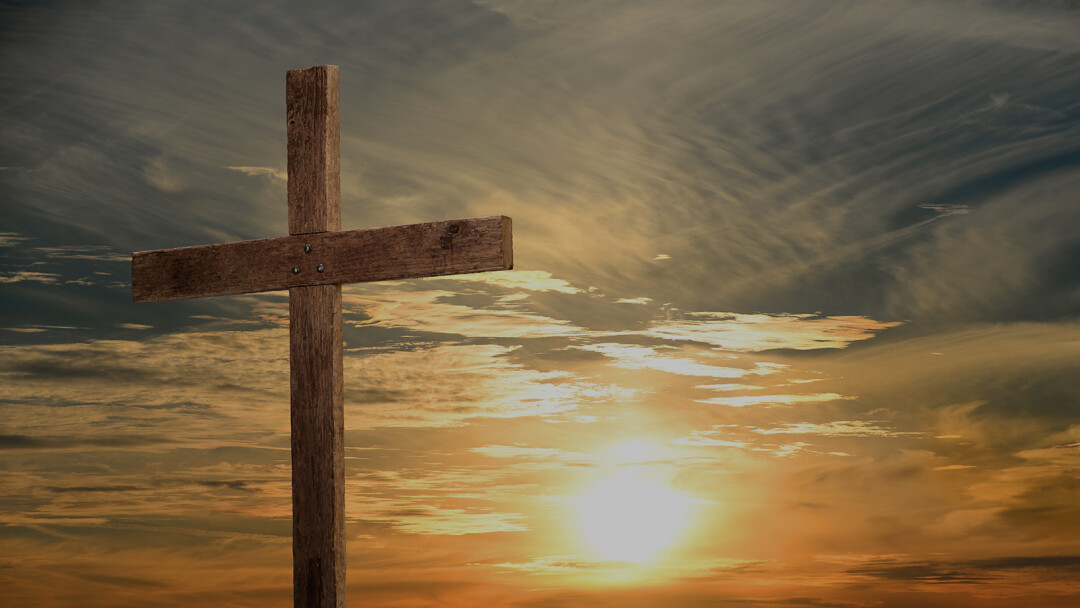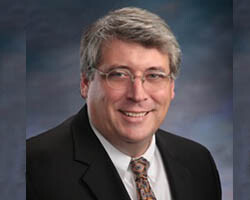What's in Your Gene?

A basic lesson of being an historian is to see the difference between a living memory and an historical perspective. A living memory is your generation, your experiences, things that shaped you, influenced your life. Who were your parents, your siblings? Where did you grow up? Where did you go to school? Did you go to church, to camp, to Spain as a kid? These are the things of a living memory.
Some of this can be the stuff of history. For those born prior to 1950, the death of President Kennedy is both living memory (where were you when . . .) and historical perspective- this was a pivotal moment. Yet, for the most part living memory tends to be mundane, not the stuff of frontpage news.
Historical perspectives are the frontpage. History is so many generations, centuries, even millennia of pivotal moments. So much time, so many people, you can't absorb it and take it in the way a living memory happens. You move from key moment to key moment, frontpage to frontpage, watersheds and turning points. History is like a sea to navigate not a backyard pool your folks put in during the ’70s.
I knew all of this, was trained in this, I ramble on about this for hours. I am fascinated by the way some moments have the power to change the world and others do not. Or, how people thought events were of great consequence when they happened, but fade in time; where minor, seemingly random events no one turned their heads to notice set the course of fate. Again, I knew this, but it didn't prepare me for my own history.
For nearly a decade I have pursued, mapped, charted, and researched my family. Ancestry.Com made this exciting and rather easy. A family tree is easy when thousands of people work on it, connected to a website, and pass information to one another with ease.
What surprised me was my surprise. I should have known better. Yet, I was unprepared for the moment when my life entered history. I felt the shift of moving from the foggy, mundane nature of living memory (the events that mean something to me, the generational characteristics all too real) moving from this to the watersheds, turning points of history.
I have a bunch of ancestors who fought in the revolutionary war. It was strange to move from seeing the 18th century as historical, world events, and then seeing the 18th century as my people, my great-great-great-great-great-great grandparents as in the room. But they were there.
For instance, I have living memories of Arizona. Beautiful state. I've seen Flagstaff, Phoenix, Tucson, but then I am reading newspaper articles about a great, great uncle who was the territorial governor, appointed by the president, and probably in league with the railroads, the mining companies as territorial governors at the time tended to be. I was familiar with the monied influence of the robber barons of the 19th century and the way the railroads and land deals shaped the west. I was unprepared for it to be my family.
Yet, what really shook me, pushed me to see history in a different light was violence. At some point if you are unearthing your ancestors, you will meet violence. Suicide, murder, injury, not too pleasant moments. Suddenly, I was reading newspaper articles of death and scandal of my family. It was a tough moment to read census reports from the 1840s and 1850s of my ancestors living in South Carolina, Georgia, and Alabama and working down the sheet. Address, occupation, head of house, children, slaves. That's a different sense of connection to the Civil War; it was not quite the Ken Burns' affect.
The shift from living memory to historical perspective was tough. One ancestor fought on the side of the union in the civil war and reenlisted after the conflict was over in 1865; then he went to fight in the plains; he lived just outside of Wounded Knee when it happened. He's in the Who's Who of South Dakota history, knew Wild Bill Cody, but . . ., then you remember what happened at Wounded Knee. There is a roller coaster experience. He fought to save the union to end slavery, but then participated in genocide.
Do you remember the ad campaign: what's in your wallet? It was a promotion for a credit card. A good one. Not the credit card, but the slogan. What’s in your wallet? The more of my ancestors I excavated the more I felt like I was in a kind of strange twist on the ad. Instead of what's in your wallet, it was, what's in your genes? What does all this violence and mayhem say about you? Is this in you, a part of you? Is this written in your blood?
I was surprised by my surprise. Suddenly, I went from a safe distance— objectivity and scholarly pursuit— to seeing myself immersed in destruction. I wasn't sure how much of the past I wanted to dig up. Maybe skeletons are better left in the closet.
That Pilate washed his hands and then handed Jesus over to the cohort (a cohort is 800 men who are highly trained in warfare), that moment of hand washing and handing over is an historical moment. A key moment in history. No one would debate that. Imagine if Pilate had defied the crowds and let Jesus go, or if he sent Jesus to Rome to diffuse the situation. That’s what happened to Paul. Paul was arrested, beaten, and then sent to Rome. What a different story had Pilate refused the coercion of the Pharisees. But, fearing a riot, he yielded to the threat. Gave Jesus to the cohort. A cohort is a lot of violence; a crucifixion is a violent death.
Sometimes when I am reading the passion of Matthew, I need to remind myself, the suffering brought upon Jesus (while immense) was all in a day. Jesus is arrested, interrogated, flogged, interrogated again, flogged, and then crucified in less than twenty-four hours. I don’t say this to make it less, but it helps me to remember this was not his life, a day, his last day, but not his life.
There was only one other moment of violence that touched Jesus’ life. His hometown of Nazareth wanted to throw him over a cliff. I count that as violent even though it didn’t happen. Angry villagers are angry villagers. Not pleasant. And while the teachings of Jesus have lots of violent images, from being thrown into fiery furnaces or outer darkness, to millstones and drownings, while there are a lot of violent images, they are all metaphors. Metaphors meant to reflect us. There is no moment where Jesus says, “let me tell you about the time the folks in Capernaum beat me up.” Lots of violent images, but only one day of actual suffering.
The Christian tradition makes a lot of this twenty-four hours. Christian art is filled with crucifixions and crowns of thorns. Christian hymnody loves the blood. The blood that buys us, redeems, satisfies our debt with a sacrifice atoning sins.
No argument from me. Too many centuries of theology of the cross, stripes he bore for us. But, in terms of what the suffering means, and its purpose in the story of Jesus, his life and living memory, I am not sure if this ought to be the defining moment. His life was not about violence; he wasn’t a violent guy; he didn’t spend years in prison or in and out of jail. There might have been a riot. But Jesus didn't cause this.
Paul killed people. Jesus didn’t. As far we know, Jesus was arrested once, beaten up, and then put to death. It's like a car crash. It all happened quite quickly. We don't live in a car crash.
That the crowd is ready to riot, that the cohort is trained to be brutal, this I get. This is an accurate definition and an understanding of us. We can go from peaceful to riot in a heartbeat. The cohort was not 800 guys in a bad mood. These were elite soldiers trained to destroy with a license to kill.
It's always strange to me: we make so much of the violence and forget the teachings; we make so much of the crucifixion yet seem to forget the transfiguration; we have a whole season each year where we reflect upon the suffering of Jesus: 47 days next Lent (it’s a leap year) 47 days to reflect upon the 24 hours of suffering?
You see what I mean?
To be fair Jesus talks about violence. He does. But he talks more about agriculture than anything else. Plants, seeds, bushes, crops, vineyards, trees, flowers, grass. We don’t have 47 days reflecting upon farming each year. I’d like that. Instead, we are called to sing, to pray, to meditate on the suffering of the twenty-four hours. As an historian I love traditions, but I must ask, why consider so much violence?
The violence I found in the ancestry work is still troubling. There is a sense of shame and sadness. It is different to read the histories of slavery, our nation’s economic development and then turn to the census reports from Alabama in the 1850s and see the column for slaves bearing a number.
A part of me wants to say, well, the violent ancestors were outliers. The majority were peaceful loving kind farmers who came as colonists from Europe and lived in Pennsylvania. That’s a nicer picture. Maybe the non-violent outnumber the violent. Maybe. But this sort of math is not helpful. Not to me.
Jesus taught about violence and used violent images in his teachings because that is part of what it means to be human. And while I won’t argue with the cosmic redemption of the faithful by the sacrificial death of Jesus, I am not a believer that his violent death changes our proclivity for violence.
We are not different than Cain and Sampson and Elijah. Jesus reconciled us to God. True. But we are not reconciled with each other. Jesus’ violent death is not about him; it’s about us. He didn’t riot and get killed. He was not a soldier in a cohort. The violence was around him, not in him.
Bob Dylan said, I am just to get to heaven before they close door. I get that feeling. His place, my place, your place beyond that door, well, we are vouchsafed by a loving savior who calls us home. Generation after generation have sought the path to the gates to knock at heaven’s door.
Before we get there though we have a bit of work to do. God’s gift of eternal life awaits in the power of the resurrection. Got it. Yet, in the meantime, in the half-life of redemption, what would it mean for us to forsake violence? What would it mean for us to see destruction as a stranger and not a trusted tool?
I believe the gospel writers include the details of Jesus’ death not to catalogue his suffering, but to make clear the propensity in us to make others suffer. The kingdom of God is taken by violence, and the violent bear it away. Jesus said this. He wasn't speaking of himself; he was talking about us.
We try to get what is good by force, not friendship; we demand; we only wait for opportunity not justice. Jesus didn't demand anything, save endurance.
I know we are supposed to praise the blood of Jesus redeeming us. But what if we live in peace where our blood, our genes bring compassion not suffering? Amen.

Rev. Dr. Fred G. Garry
Senior Pastor & Head of Staff
Sermon Notes
You can add your own personal sermon notes along the way. When you're finished, you'll be able to email or download your notes.
